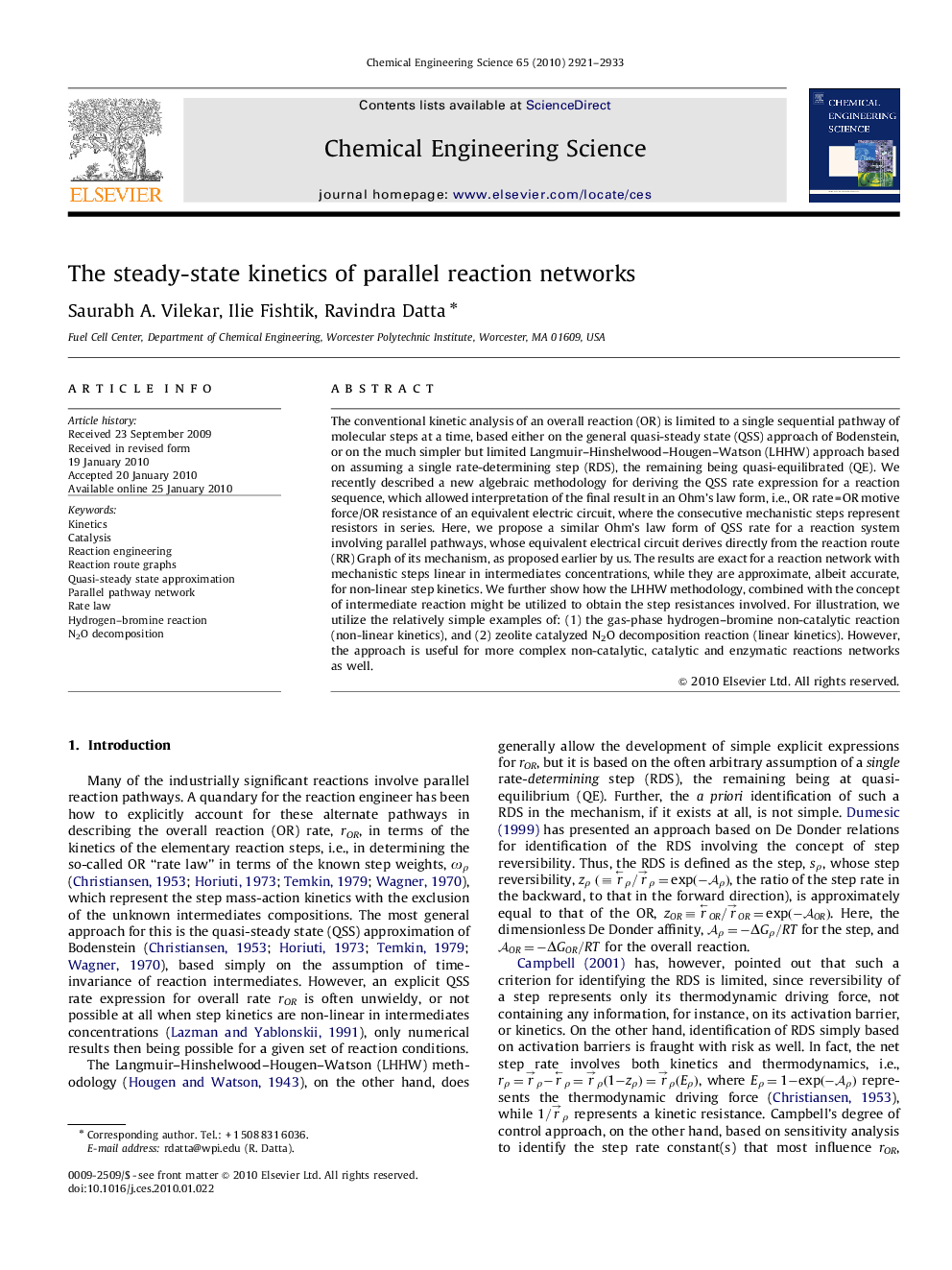| Article ID | Journal | Published Year | Pages | File Type |
|---|---|---|---|---|
| 156899 | Chemical Engineering Science | 2010 | 13 Pages |
The conventional kinetic analysis of an overall reaction (OR) is limited to a single sequential pathway of molecular steps at a time, based either on the general quasi-steady state (QSS) approach of Bodenstein, or on the much simpler but limited Langmuir–Hinshelwood–Hougen–Watson (LHHW) approach based on assuming a single rate-determining step (RDS), the remaining being quasi-equilibrated (QE). We recently described a new algebraic methodology for deriving the QSS rate expression for a reaction sequence, which allowed interpretation of the final result in an Ohm's law form, i.e., OR rate=OR motive force/OR resistance of an equivalent electric circuit, where the consecutive mechanistic steps represent resistors in series. Here, we propose a similar Ohm's law form of QSS rate for a reaction system involving parallel pathways, whose equivalent electrical circuit derives directly from the reaction route (RR) Graph of its mechanism, as proposed earlier by us. The results are exact for a reaction network with mechanistic steps linear in intermediates concentrations, while they are approximate, albeit accurate, for non-linear step kinetics. We further show how the LHHW methodology, combined with the concept of intermediate reaction might be utilized to obtain the step resistances involved. For illustration, we utilize the relatively simple examples of: (1) the gas-phase hydrogen–bromine non-catalytic reaction (non-linear kinetics), and (2) zeolite catalyzed N2O decomposition reaction (linear kinetics). However, the approach is useful for more complex non-catalytic, catalytic and enzymatic reactions networks as well.
